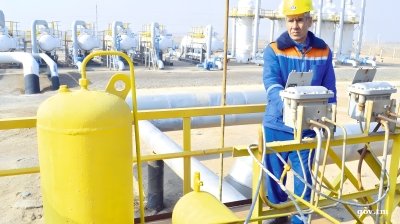Foreign exchange rates in Tehran's open market dropped sharply on April 13, with the Iranian rial strengthening more than 10% against the US dollar following what officials described as "constructive" indirect negotiations between Iran and the United States in Oman.
The US dollar was priced at IRR 850,000, down 10.6% compared with the previous day's close. The euro declined 10% to IRR 960,000, while the Emirati dirham registered an 11.3% fall to IRR 232,100. USDT cryptocurrency, however, bucked the trend on April 13, ending the day IRR 16,700 higher than hard currency. This marks a reversal from recent months when USDT typically traded below physical currency rates.
The dramatic April 13 response follows statements from both Iranian and American officials suggesting progress in the talks. The White House confirmed that negotiations would resume on April 19 in Europe. Meanwhile, Iranian Foreign Minister Abbas Araghchi described the first round as taking place in "a calm and respectful atmosphere."
"Some believe the selling pressure in the foreign exchange market stems from positive signals from the indirect Iran-US negotiations in Oman, as well as the overnight decline in Tether prices, which serves as a psychological barometer for the currency market," a market expert told Intellinews.
Tehran's stock market also responded positively to the diplomatic developments, with the main index gaining 62,000 points. Approximately 86% of traded symbols showed gains, with Bank Mellat, Bank Tejarat, and Mobarakeh Steel Company attracting the highest capital inflows.
Currency traders in Tehran have adopted a wait-and-see approach, with transaction volumes at their lowest levels in recent months. "Traders are withdrawing from buying positions, and the formation of selling queues in the Tehran market indicates that people prefer to sell their dollar assets while awaiting a clearer political outlook," a currency dealer said.
One forex expert cautioned that while the currency market has taken an optimistic view: "Although no formal agreement has been reached yet, the intensity of market reactions suggests that some people consider a deal to be virtually certain," an economic analyst in Tehran said.
Currency experts warn that premature market optimism could lead to dangerous volatility if diplomatic progress fails to materialise.
"Markets are currently trading on speculation rather than concrete outcomes, creating a precarious situation where any disappointment in next Saturday's talks could trigger a violent reversal," said a Tehran-based economist. This pattern of sharp fluctuations threatens business planning, import-export operations, and economic stability at a time when Iran's economy remains fragile.
The psychological impact of potential sanctions relief has already led to decreased hedging activity and risky speculative behaviour, with many traders abandoning protective positions based solely on diplomatic signals. "We've seen this cycle repeatedly since 2015—initial euphoria followed by crushing disappointment," she added.
Another analyst said Iranian exchange rates could see a 25-35% decline if negotiations between Iran and the US yield positive results,
Economic analyst Behnam Maleki said: "We saw that the mere announcement of the timing for indirect talks between Iran and the US in Oman led to a 7% decrease in currency prices, and continued positive news from the Oman negotiations has brought the dollar down from a peak of IRR1.07mn to around IRR890,000," Maleki stated.
The economist stressed that those claiming negotiations have no effect should consider that "a single statement and a two-and-a-half-hour meeting, without any signatures or agreements, has had this level of impact."
Maleki described Iran's economic challenges and explained that problems facing production, the economy, and trade stem partly from external sanctions imposed in recent decades. However, he noted that "internal sanctions" such as corruption, lack of transparency, and management weaknesses have also contributed to economic crises.
"These two factors have prevented desirable economic growth in the country and fueled inflation rate increases and problems for the people," he said, adding that these issues have caused Iran's national currency to lose value until recent developments around the negotiations continuously, he said on April 13.
Maleki pointed out that Iran's currency value has become so volatile that "it changes significantly overnight based on a comment from the US president or a tweet from some individual."
News

Russia closing the trap as its forces expand control of Pokrovsk
The stronghold city of Pokrovsk in the heart of the Donbas now risks “becoming a graveyard for Ukraine’s finest,” Euromaidan Press reports as Russian forces expand their control and threaten to encircle hundreds of Ukraine’s best troops.

Czech election winner Babiš signs coalition agreement with SPD and Motorists
ANO and its partners are poised to form the most rightwing cabinet in the country’s history.

Rheinmetall invests €400mn in propellant powders joint venture in Romania
Partnership is part of Bucharest’s effort to attract defence investment and expand its domestic industrial capacity.

Hungary, US set to deepen nuclear energy ties during Orbán’s White House visit
Viktor Orban, seeking to secure a temporary waiver from US sanctions on Russian oil, will propose a pragmatic energy deal to Washington, offering deeper cooperation in the LNG and nuclear sectors.





